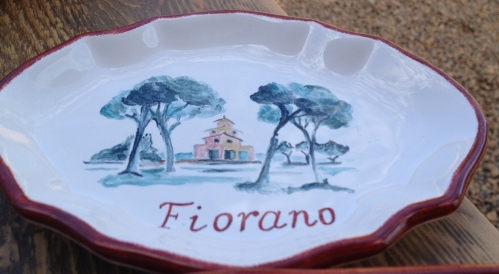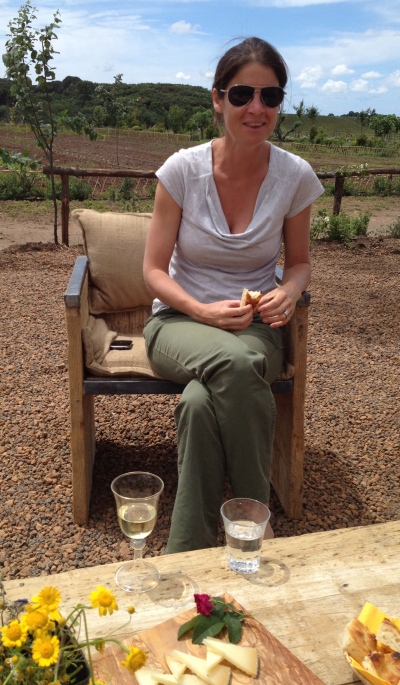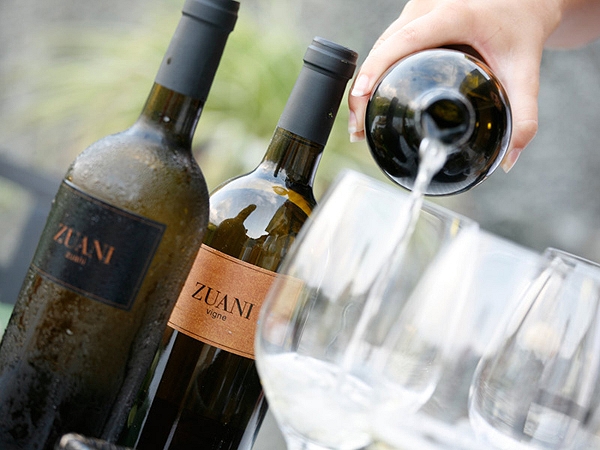As we approached Venice by water taxi I was struck once again by how magical and dream-like this ancient city is with its picturesque canals, graceful bridges and beautiful architecture.
The taxi docked right beside a café and restaurant that looked as if it would be an ideal spot to have breakfast called the l’Ombra del Leone. When we returned the next morning, the place was empty although the outdoor seating was the perfect place to watch the gondolas participating in the celebration of the Festa e Regata della Sensa, an annual event. Among the boats was an ornate one called theBucintoro used by the Doge, the leader of Venice. The mayor, replacing the Doge of old, throws a gold ring overboard to symbolize Venice’s marriage to the sea. Yes, Michele and I agreed as we sipped cappuccino and ate our cornetti, Venice is a magical city and full of surprises around every corner.
The Restaurants We Enjoyed

Zucchini Flowers
Ai Gondolieri is a meat lover’s restaurant in a city surrounded by water and known for its seafood. The restaurant began as an old inn where locals could go to eat simple meats, drink a glass of wine and play cards. Today it has become a refined, quiet restaurant with excellent service and food. I had perfectly fried zucchini flowers to begin and then slices of calf’s liver on Venetian polenta, which was wonderful.
 Calf’s Liver
Calf’s Liver
With dinner we had a wine that I have been drinking for many years, the VillaCapezzana Carmignano 2008 DOCG made from 70% Sangiovese, 20% Cabernet Sauvignon and 10% Canaiolo.
 The hillside vineyards are at 150 to 200 meters and the exposure is south, southeast and southwest. The soil composition is shale and the harvest is in mid September. Vinification is in steel tanks and the wine is aged in 25HL Allier barrels for 10 months. It remains in bottle another 3 months before release.
The hillside vineyards are at 150 to 200 meters and the exposure is south, southeast and southwest. The soil composition is shale and the harvest is in mid September. Vinification is in steel tanks and the wine is aged in 25HL Allier barrels for 10 months. It remains in bottle another 3 months before release.
Pensione, Restaurant Wildner I posted pictures of Venice on Facebook while we were there and a friend, Faith Willinger, who lives in Florence and is a noted cookbook and travel writer saw them. She wrote that I should go to this “fantastic restaurant” and that “the wine list will blow you away.” She added that we should ask for Luca Fullin, the son of the owner who is responsible for the wine list. With a recommendation like this we just had to go. The restaurant is right on the Grand Canal and there is out door dining.
We introduced ourselves to Luca and told him that Faith highly recommended the restaurant to us.
The wine was an excellent combination with pasta with zucchini and zucchini flowers to start followed by seppie (cuttlefish) in a black ink sauce and peas with grilled polenta.
Fiaschetteria Toscana This restaurant began as a Tuscan wine shop where products from Tuscany were sold. It later became a trattoria and in 1983 a restaurant. Michele and I have been coming here for a number of years.
It has a very nice dining room and two upstairs rooms for larger parties and outdoor dining in a small piazza just across the street. I ordered the moleche, which are baby soft shell crabs. They were crisp and full of flavor and I order them whenever I can. We ended with Michele’s favorite, wild strawberries with crema gelato.

















































